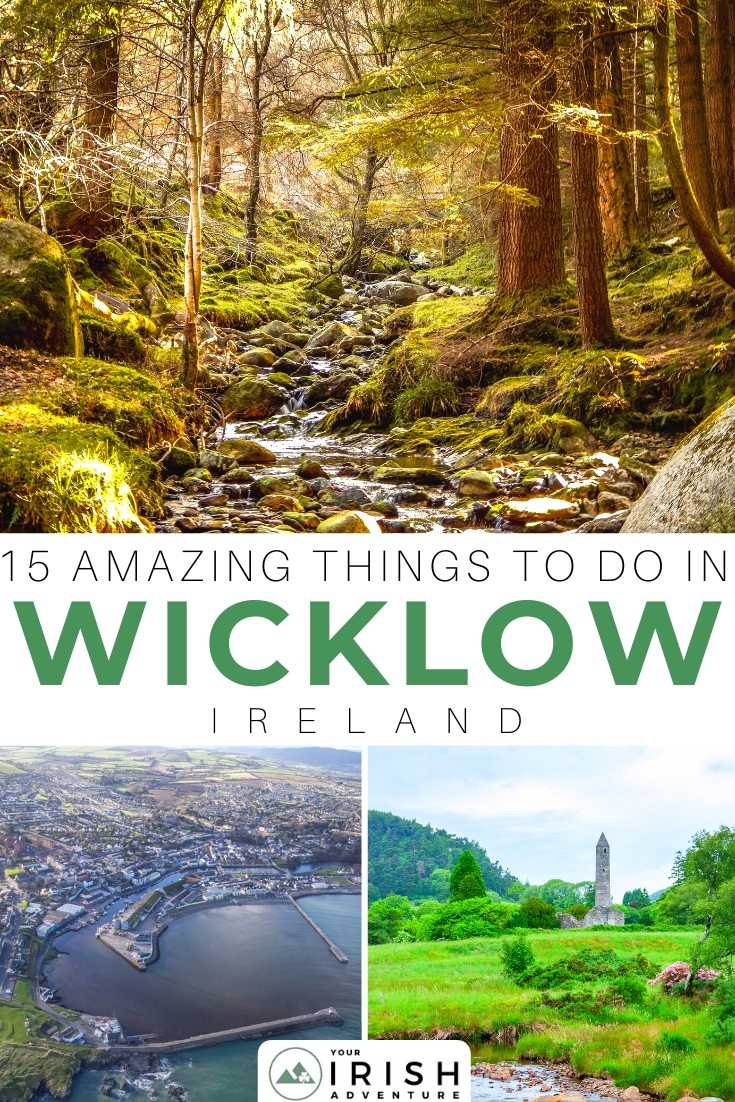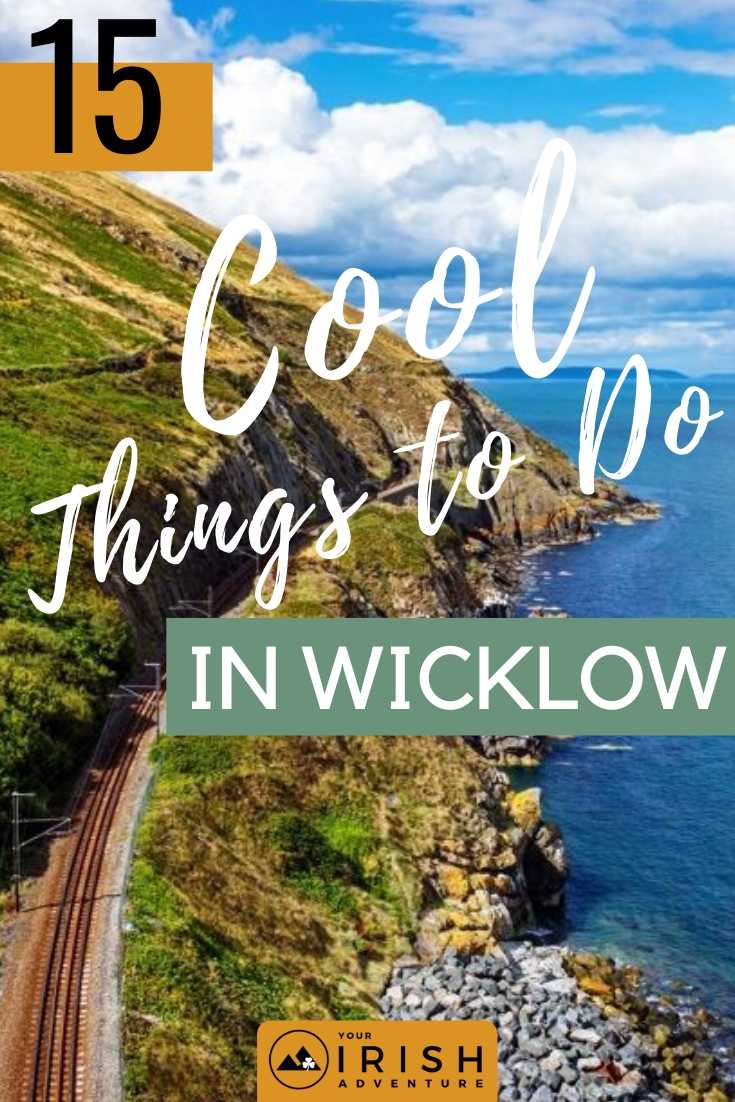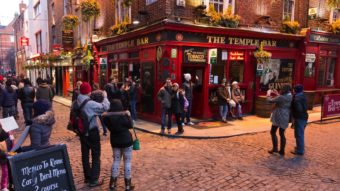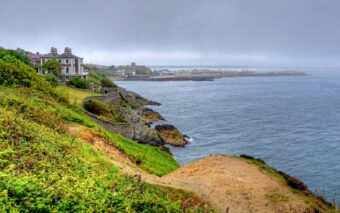There are so many things to do in Wicklow; the small county is packed with diverse natural, cultural and historical attractions to suit kids and adults alike.
Wicklow’s proximity to Dublin makes the county an accessible location to explore the real Ireland of wild landscapes, dramatic coastlines, and welcoming villages and pubs!
I have travelled to County Wicklow several times a year for the last ten years but each time I visit, there is always something new to see and do.
In this post, I’ll list the top 15 things to do in Wicklow and places to visit you won’t want to miss.
In This Post:
- 1. Visit The Seaside Town Of Bray
- 2. Stretch Your Legs and Climb Bray Head
- 3. Enjoy A Perfect Pint Of Guinness And Traditional Irish Music In One Of The Best Pubs In the World
- 4. Walk The Coastal Route From Bray to Greystones
- 5. Take A Trip Into The Wild Landscapes of the Wicklow Mountains
- 6. Explore Ancient Glendalough (one of the most amazing places to visit in Wicklow)
- 7. Visit Wicklow Town And Spend Time In Jail!
- 8. Smell The Flowers at Powerscourt Gardens
- 9. Relax at Brittas Bay (one of the best things to do in Wicklow in the summer)
- 10. Explore Kilruddery House
- 11. Hug A Big Tree at The National Botanic Gardens
- 12. Dust Off Your Hiking Boots and Climb The Iconic Sugar Loaf Mountains.
- 14. Powerscourt Waterfall
- 15. Shop Till You Drop at Avoca Village
- Things To Do in Wicklow: FAQs
- Now You Know What To Do in Wicklow
1. Visit The Seaside Town Of Bray
Coastal Bray is a popular location all year round, especially for day-trippers from Dublin. But, there are numerous things to do in Bray and if you have time, you could spend longer than just a day.
It is an easy one-hour drive from Dublin city centre and there is ample fee-paying parking at the seafront. Alternatively, enjoy the scenic 45-minute train ride from Dublin to Bray which drops you directly to Bray promenade.
In the long summer season, Bray hosts a free, beachside festival with a funfair, regular live music events and a free outdoor cinema. There is also a free to attend, annual air show in July when daring aerial stunts are performed over the sea for the viewers who pack onto Bray Beach.
In the winter months, stroll along the pretty, one-kilometre-long seafront promenade or spend time skimming stones into the sea from the pebbly beach. If you are feeling particularly brave, you can join Bray’s annual swim on New Year’s Day in the chilly Irish sea.
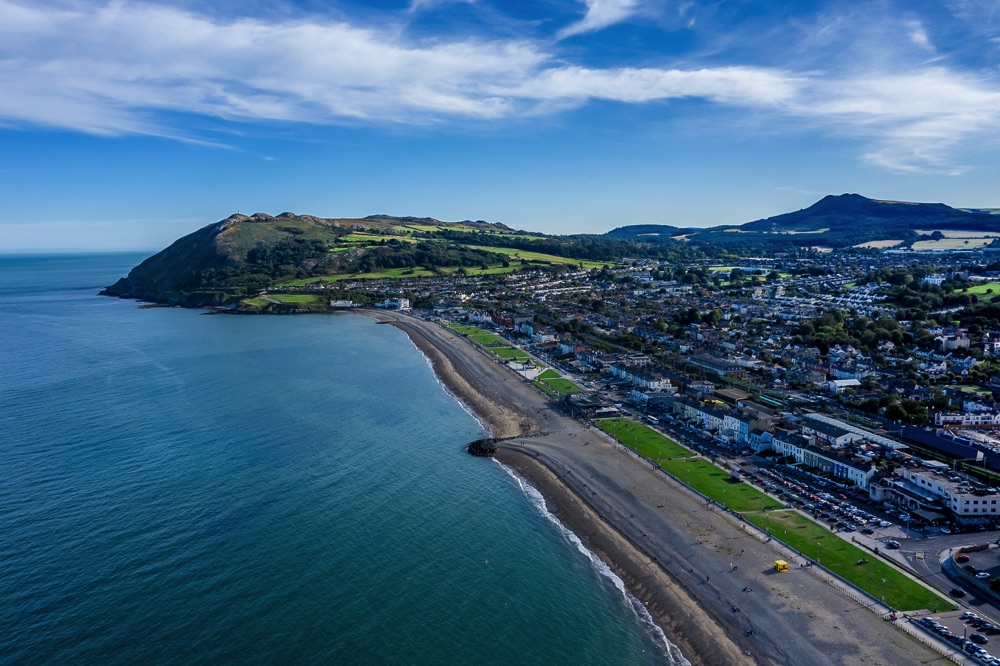
If you want to stay warm (and dry!), watch the world go by from the many cafes and pubs which line the seafront of Bray. Many of these eateries serve a hot and filling traditional Irish breakfast.
A ‘full Irish’ or ‘Irish fry up’ is a delicious, calorie-laden treat of fried sausages, fried egg, fried bacon and bread (usually Irish soda bread).
To distinguish it from its rival, the traditional British fried breakfast, an Irish breakfast has the extra additions of black pudding and white pudding – and no baked beans.
White pudding is made from pork and oatmeal or barley whereas black pudding (which is definitely an acquired taste) is made from pig’s blood.
Enjoying a full Irish whilst watching the world go by on the promenade is one of my favourite things to do in Wicklow.
2. Stretch Your Legs and Climb Bray Head
At the end of Bray promenade is Bray Head, a hilly promontory that dominates the seaside town.
Join the signposted path at the end of the promenade to begin the climb to Bray Head. The rocky, uneven path winds upward through the forest and across patches of vivid yellow gorse to reach the enormous concrete cross which marks the summit of Bray Head, 218 metres above sea level.
The concrete cross – which was erected in 1950 – is an iconic Bray landmark and every year on Good Friday, local people and tourists join a procession leading from the town up to the Bray Head cross.
The path to Bray Head is not technically challenging and is achievable for all ages and abilities. The windy summit provides fantastic 360-degree views of Bray, the Wicklow mountains and coastline and further afield into Dublin.
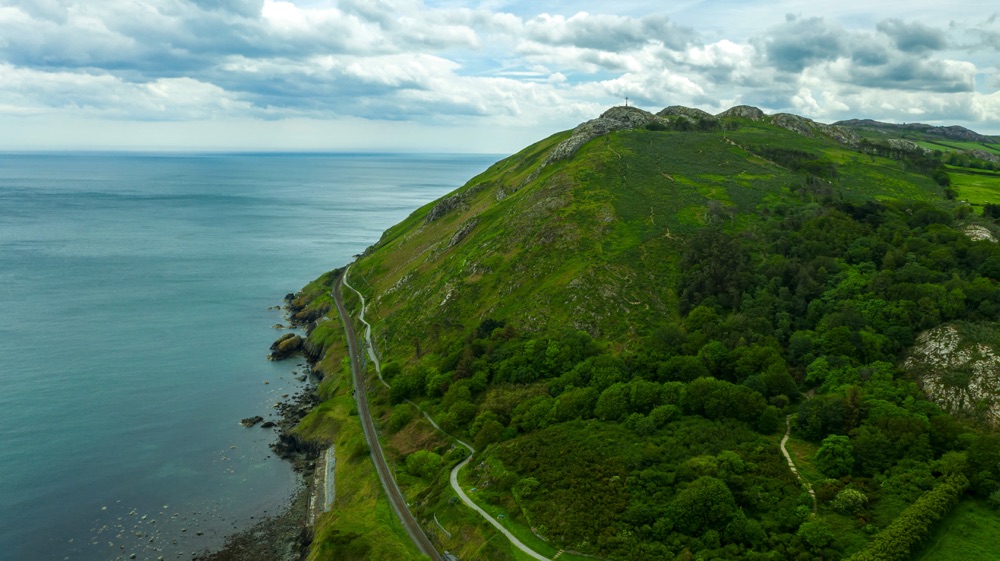
The expansive view is well worth the one-hour exertion to reach the summit. However, the summit is not enclosed and there are some steep drops so watch your footing whilst admiring the view.
3. Enjoy A Perfect Pint Of Guinness And Traditional Irish Music In One Of The Best Pubs In the World
After climbing Bray Head, reward yourself with a perfectly poured pint of Guinness in the Harbour Bar, located at Bray Harbour on the opposite end of the promenade to Bray Head.
This quirky, family-owned pub is nearly 200 years old and its cozy snugs and private nooks are crammed with historical artifacts from the pub’s history.
Relax with a pint of rotated craft ale (or go native and have a Guinness!) or savour a home-cooked meal on one of the pub sofas or an armchair in front of a roaring open fire.
Enjoy one of the traditional Irish music sessions in the beamed function room upstairs from the bar. There are also regular comedy nights, open mic events and storytelling sessions.
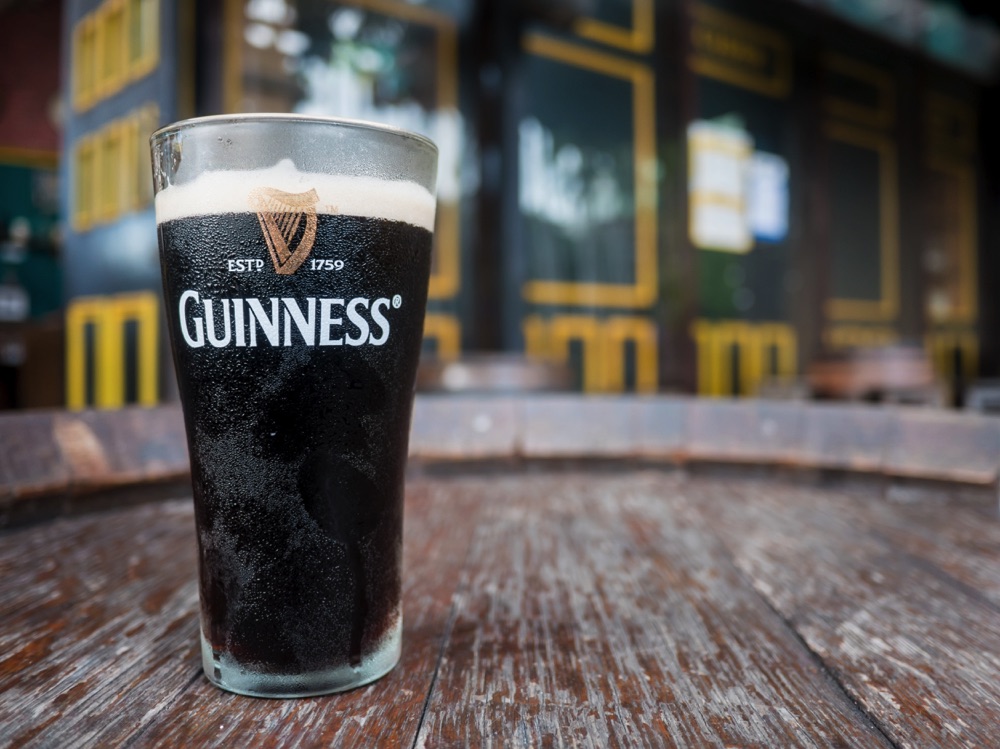
The bar serves excellent toasties (a toasted sandwich with a variety of fillings) including the delicious O’Toole Toastie named after a Harbour Bar regular, the famous actor Peter O’Toole.
This small, hidden gem of a pub is much loved by Bray locals and was voted Best Pub In The World by the Lonely Planet in 2010.
4. Walk The Coastal Route From Bray to Greystones
From the end of Bray promenade where the climb to Bray head begins, continue walking along the coastal path to the charming neighbouring town of Greystones.
On a sunny day, this 7-kilometre long walking route provides sweeping views of the Wicklow coastline and the Irish Sea.
The unpaved coastal path is elevated but relatively flat and is accessible to all with a head for heights.
The path follows the same route as the Dublin – Wicklow rail line which was designed by the famous Isambard Kingdom Brunel in the Nineteenth Century. The walk is popular with Sunday strollers, families and runners.
At the end of your scenic walk, relax on the beach in Greystones or browse the small town’s art galleries and craft shops before catching the train back to Bray or onward to other Wicklow attractions.
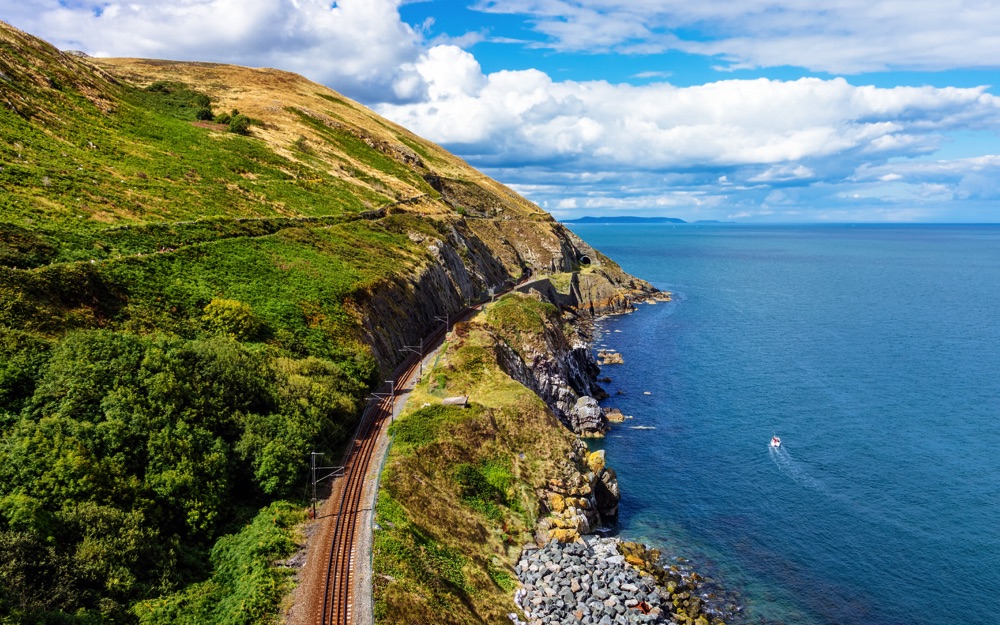
Spring is one of the best times to visit Ireland, and this is a great walk to complete during this time when the sloping hillsides are covered with colourful wildflowers.
5. Take A Trip Into The Wild Landscapes of the Wicklow Mountains
The Wicklow Mountains are best accessed by car. Self-driving will enable you to stop whenever and wherever you like to savor the wild landscapes of the area.
Follow one of the area’s scenic driving routes and choose from the numerous hikes available for all ages and abilities.
Make sure you check the weather forecast before setting out on a hike or a drive in the Wicklow Mountains. If you do not wish to self-drive you can join one of the many one day guided tours on offer in the Dublin city centre.
Highlights of the Wicklow Mountains include a stop to look down upon the waters of Lough Tay, the dark, peat-infused waters, and pale sandy shore resemble a pint of Guinness.
Lough Tay is part of the privately-owned Guinness Estate which also helps to explain the more common name for the lough – the Guinness Lake.
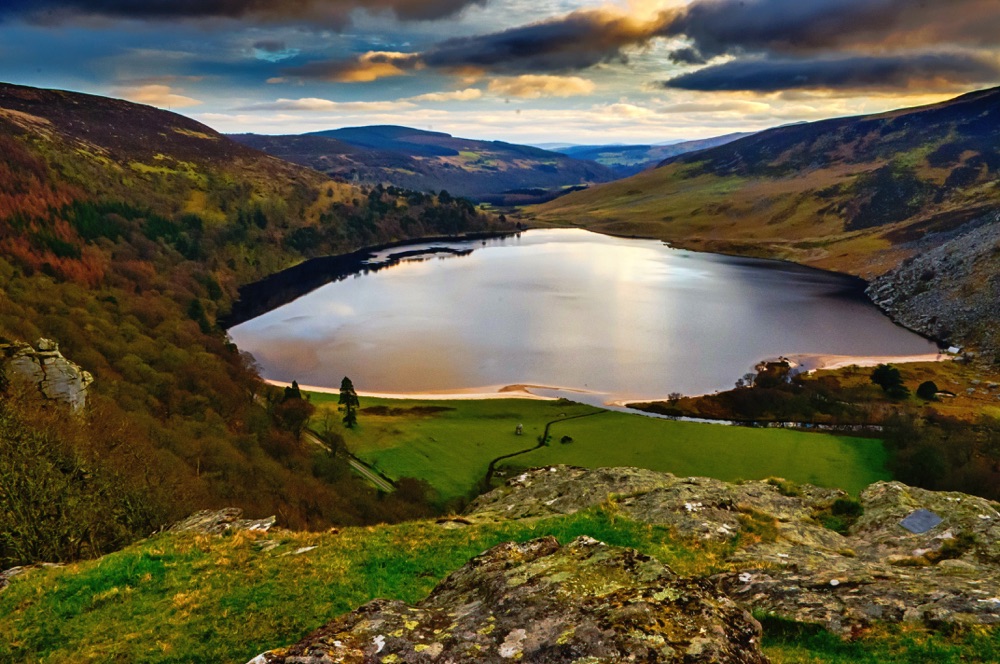
Travel along the stunning Sally Gap (known on maps as the R759) which is a ‘pass’ or road that winds across the mountains between peat bogs, patches of purple heather and pockets of dense forest.
This exposed, narrow, and winding road is well worth the drive; just make sure you stop every so often to get out of your car to enjoy the peace and stillness of the area.
Better yet, join a fun bike trip to take in the natural beauty of the area. This highly-rated tour is a great option.
Stop off in Glencullen at the famous Johnnie Fox’s Pub which was established in 1798.
Johnnie Fox’s is reputedly one of Ireland’s oldest pubs but it is also Ireland’s highest pub. In addition to the great food and drink on offer, this lovely, convivial pub offers a popular Hooley Night.
The Hooley Night dinner package includes a four-course dinner to toe-tapping live Irish music followed by traditional Irish dancing. It is a popular, sell-out thing to do in Wicklow so pre-book your Hooley Night tickets before visiting.
6. Explore Ancient Glendalough (one of the most amazing places to visit in Wicklow)
Glendalough lies in the heart of the Wicklow Mountains National Park and is one of the most visited locations in Ireland.
Glendalough was originally the site of St Kevin’s Monastery founded in the 6th Century.
Today, you can explore the compact and well-preserved monastic ruins that include several churches, a priest’s house and the famous round tower seen on countless Irish postcards.
This 30-metre tall impossibly smooth round tower was an incredible feat of engineering for its time and will leave you puzzled as to how the monks managed to gain entry to it! The engaging and informative Visitors Centre on site will help to answer your question.
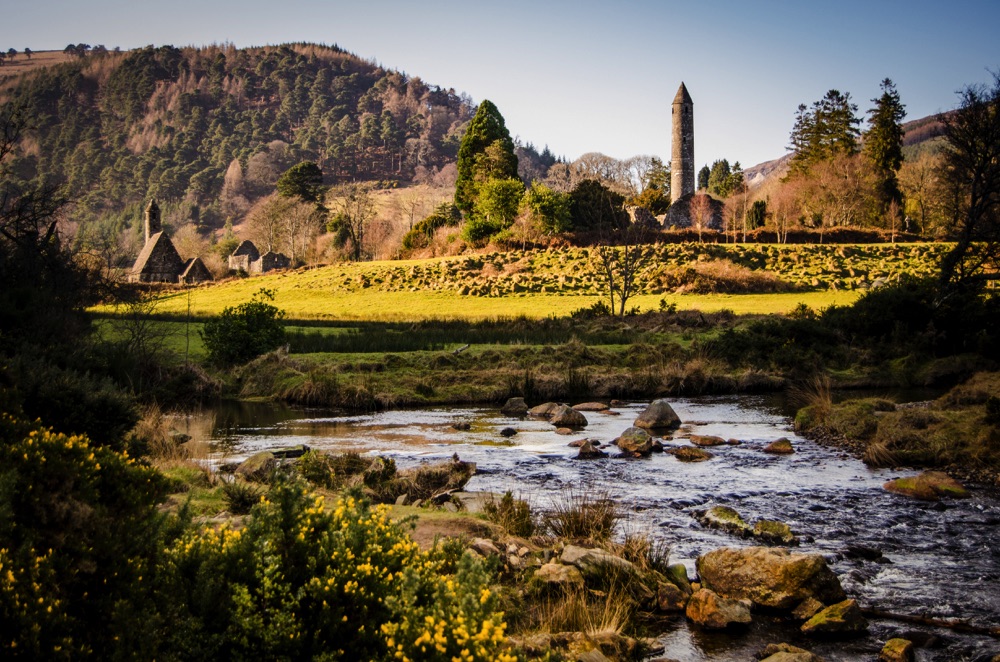
Don’t miss the ornate, carved Celtic stone crosses in the monastery graveyard. At sunset, the shadows cast by the Celtic headstones and crosses are a photographer’s dream.
Enjoy the various hikes around Glendalough’s two photogenic lakes and valleys, any of which will give you jaw-dropping views of the valley.
Alternatively, join the easy, popular walk leading from the Upper Lake to the Lower Lake. The flat path is a circular route returning via a wooden boardwalk on the other side of the valley.
Entry to the monastic site and two lakes is free but there is a fee for parking.
Glendalough gets very busy in peak season so arrive early or be prepared to hike one of the lesser-visited walks to enjoy the serenity of this location.
7. Visit Wicklow Town And Spend Time In Jail!
Spend a day exploring Wicklow Town which can be accessed by excellent public transport links from Dublin as well as other parts of Ireland.
Take a stroll around Wicklow Town’s pretty harbour or walk out to the eastern edge of the town to the clifftop ruins of the Black Castle. These ruins are still standing in the 21st Century despite the castle being destroyed in 1301.
Avid bird watchers should visit the tranquil, 15-kilometer-long coastal wetland, The Murrough.
A trip to Wicklow Town must include a visit to the sobering but fascinating Wicklow Town Gaol. This chilling jail charts the turbulent history of Ireland as told through the tragic stories of some of the jail’s unfortunate inhabitants.
An immersive audiovisual tour introduces you to the men, women, and children who were imprisoned in Wicklow Town Gaol during the last 200 years, many of whom are brought to life by holograms.
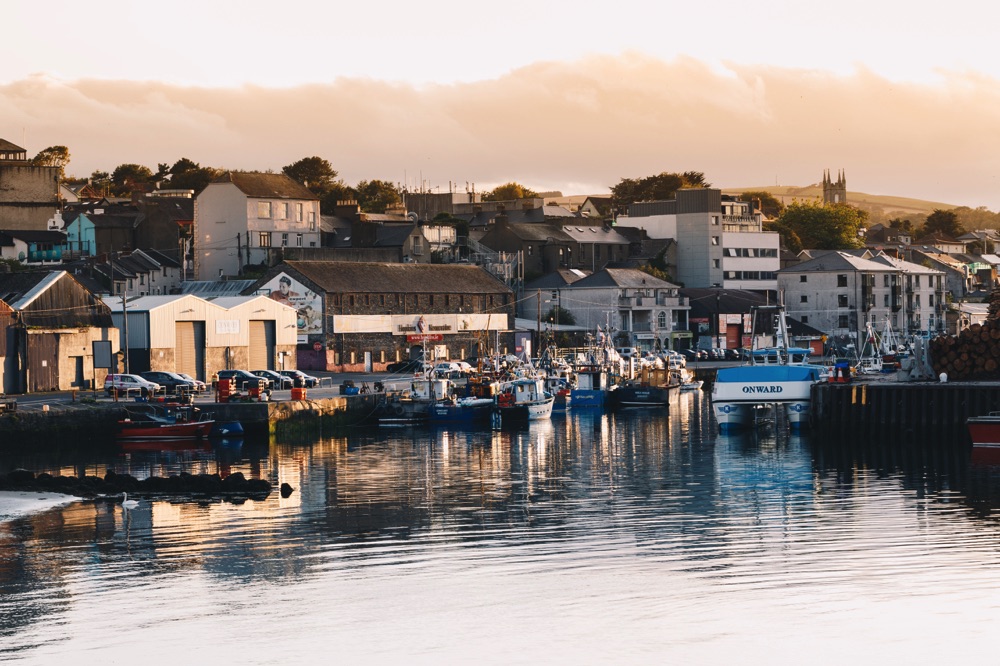
The section on the Irish famine and the mass emigration from Ireland is particularly moving.
Don’t miss the eerie, atmospheric cells in the basement of the gaol and for those who are brave enough, Wicklow Gaol – reputed to be Ireland’s most haunted building — also offers nighttime tours and paranormal tours. Get your tickets for the Gaol ahead of time, here.
8. Smell The Flowers at Powerscourt Gardens
Powerscourt Gardens is part of the Powerscourt Estate in Enniskerry.
The country house of the estate was predominantly built in the 18th Century but was sadly destroyed by fire in 1974. A partial restoration in the 1990s now hosts an excellent cafe with a fantastic terrace, an Avoca food shop, several gift shops, a gallery and a short film about the history of the estate.
Tourists visit Powerscourt today to explore the beautifully landscaped gardens of the 47-acre estate which are set against the impressive backdrop of the Wicklow Mountains and Great Sugar Loaf Mountain.
The 19th Century gardens include a Japanese and Italian garden, a pet cemetery, walled garden plus impressive fountains, ornamental lakes and formal gardens directly in front of the house itself. Don’t miss the quirky and photogenic Pepperpot Tower.
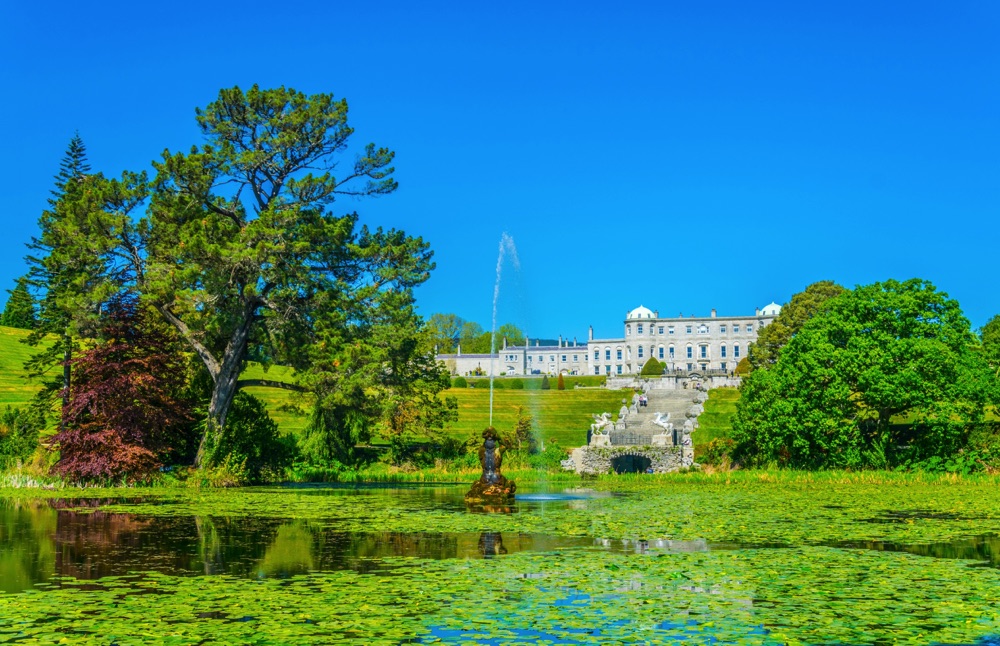
The gardens – inspired by the gardens at the Palace of Versailles in France – are outstanding in Spring and early Summer. In fact, the gardens were voted third place in the Top Ten Gardens of The World by National Geographic.
Stop off on your journey to the Powerscourt Estate in nearby Enniskerry. Enniskerry is a picturesque Victorian-era town and is the epitome of small-town Ireland.
9. Relax at Brittas Bay (one of the best things to do in Wicklow in the summer)
Brittas Bay is the best beach in County Wicklow. The five-kilometer sandy beach is backed by low sand dunes and is unspoiled — there are no shops, apartments or arcades here!
Brittas Bay is a perfect beach for a summer’s day but also for a brisk walk on a windswept winter’s day.
The clean expanse of sand has been awarded Blue Flag status for the last five years and is a designated Special Area of Conservation.
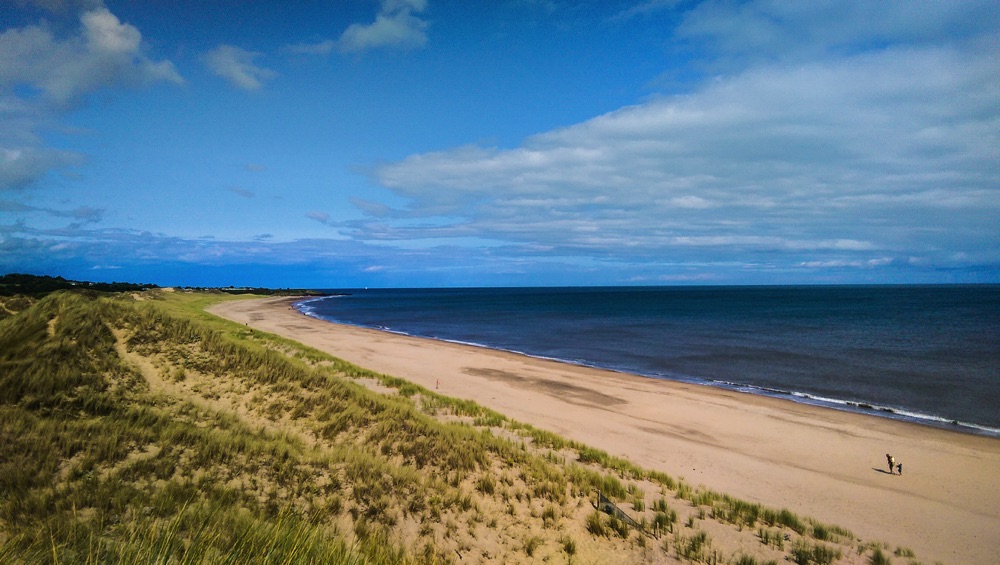
Relax in the sun or try out one of the several activities on offer such as horse riding on the beach, stand-up paddleboarding, surfing or kitesurfing. Both equipment hire and lessons are available from local companies and there are lifeguards patrolling the beach in the summer months.
Plus, after a visit to Brittas Bay, you can say you have visited the spot where St Patrick allegedly first stepped foot in Ireland!
10. Explore Kilruddery House
Kilruddery House, the ancestral home of the Earl of Meath, is set in an 800-acre estate near the coastal town of Bray.
The grounds of the 17th Century estate are a delight to wander with walled gardens, several woodland paths and formal ponds to explore.
Seasonal tours of the imposing Kilruddery House are available but check opening times before your visit.
Time your visit to catch the charming farmers market which is held every Saturday in the spring and summer months. Fresh, locally grown produce is available for sale alongside handmade local arts and crafts.
11. Hug A Big Tree at The National Botanic Gardens
The small but beautiful National Botanic Gardens in Kilmacurragh is a lovely place to spend a relaxing day in County Wicklow.
The 52-acre gardens were initially planted in the 18th Century and consist of native plants of Ireland as well as exotic plants imported from all over the world.
The gardens are free to enter and free one-hour guided tours are available daily.
If you like rhododendrons, then time your visit for March when the gardens put on an incredible display of varied, vivid colours. There is also an excellent cafe on site.
The colourful Botanic Gardens is a lesser-known thing to do in County Wicklow and, as a result, never feels crowded or busy. It is a tranquil location to escape the crowds of Dublin.
12. Dust Off Your Hiking Boots and Climb The Iconic Sugar Loaf Mountains.
The Sugar Loaf Mountains are a pair of instantly recognizable shaped mountains lying on the edge of the Wicklow Mountains.
The pair are more hills than mountains, especially when compared to other Irish peaks — Great Sugar Loaf is 501 meters high but the highest mountain in Ireland (Carrauntoohil in County Kerry) is 1,038 meters high.
Even nearby Lugnaquilla, the highest peak in County Wicklow, dwarfs the Sugar Loaf pair topping 925 meters!
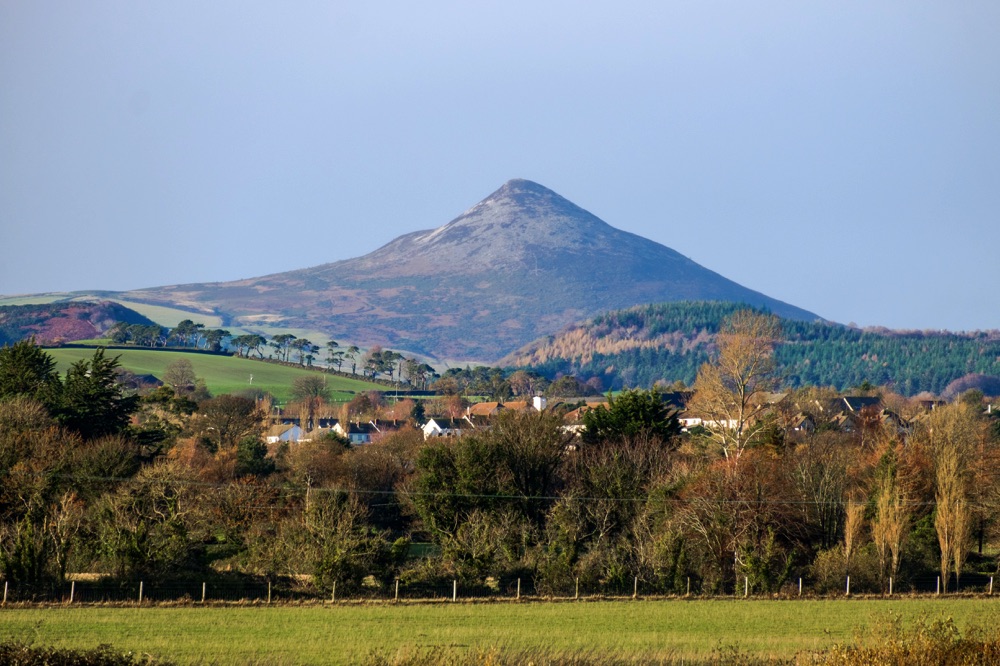
The popularity of the Sugar Loaf Mountains lies in the fact that they are accessible and achievable to visitors of all ages who enjoy a good walk with great views.
As the name suggests, hiking to the summit of Little Sugar Loaf is an easier, shorter walk than the more challenging Great Sugar Loaf.
A well-signposted, easy-to-follow path (which starts off the main road between Bray and Kilmacanogue) crosses fields of grass and spiky gorse before heading steeply upwards over large boulders towards the Little Sugar Loaf summit.
At the climax of the walk, you need to clamber over large quartzite rocks so wear sturdy, good gripping footwear.
The climb is not technically difficult or long but pack plenty of water and snacks and be prepared for the famously changeable Wicklow weather.
The 360-degree view from the 342-metre high summit of Little Sugar Loaf is breathtaking – literally; it is a very windy spot!
From the summit, you can choose to return by the same route or continue along the ridgeline for more stunning views.
If the one-hour hike to the summit of Little Sugar Loaf leaves you wanting to experience more Wicklow Mountain peaks, the iconic, conical Great Sugar Loaf mountain can also be climbed by the average hiker in around two hours.
Although Great Sugar Loaf is merely Ireland’s 404th highest peak, don’t let the low elevation fool you. Hiking to the summit of Great Sugar Loaf is a steep climb requiring scrambling over loose scree and across rocky gullies.
Make sure you wear appropriate footwear, pack waterproofs, and warm layers. There are no facilities on the route. This is one of the top hikes in all of Ireland, don’t miss it!
If you get hooked on hiking in beautiful County Wicklow, take the ultimate challenge and hike the 127-kilometer-long Wicklow Way Trail.
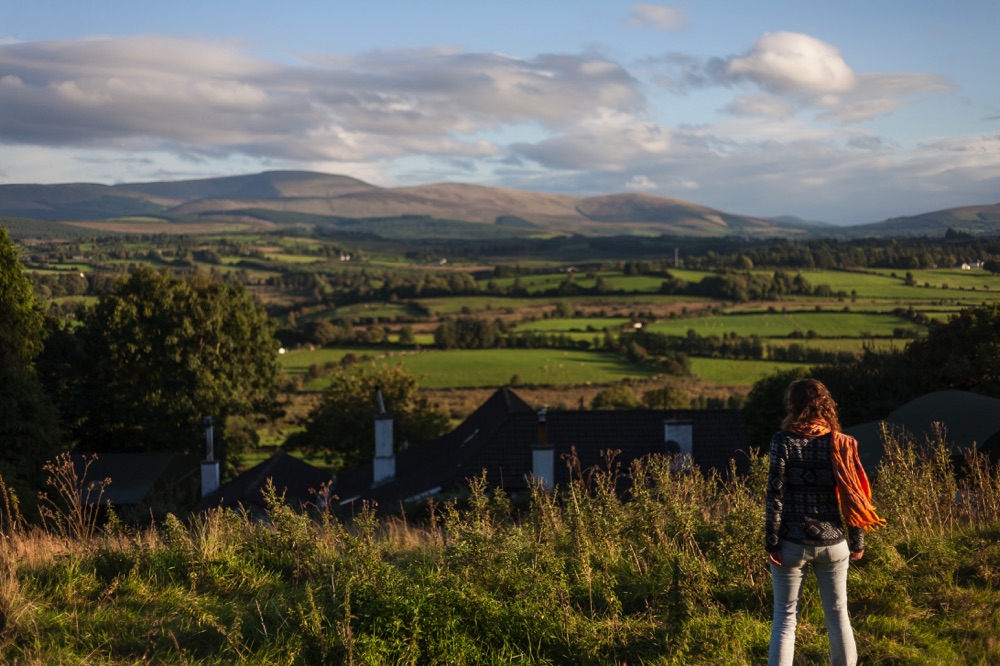
Ireland’s oldest waymarked (or self-guided) trail, The Wicklow Way starts in Marley Park, just south of Dublin and winds its way across the rugged Wicklow Mountains before finishing in Clonegal in County Carlow.
The route across the Wicklow Mountains covers the area’s most scenic and popular attractions. On route, hikers can choose to stay at family-owned Bed and Breakfast accommodation experiencing the wonderful, warm hospitality for which Ireland is famous.
14. Powerscourt Waterfall
Powerscourt Waterfall is located in a green, landscaped parkland near the Powerscourt Estate.
Though the names are similar, Powerscourt Waterfall is a separate attraction to Powerscourt Gardens with a separate entry charge.
The single drop cascade is Ireland’s highest waterfall at 121 meters tall.
The approach to the waterfall is through a lovely forest full of old Beech, Larch and Oak trees which also includes several enormous Giant Redwoods.
Enjoy a stroll along one of several woodland paths in the park or just relax on the expansive grass with an Irish picnic!
There is a playground and cafe on-site and plenty of space to escape the weekend and summer crowds.
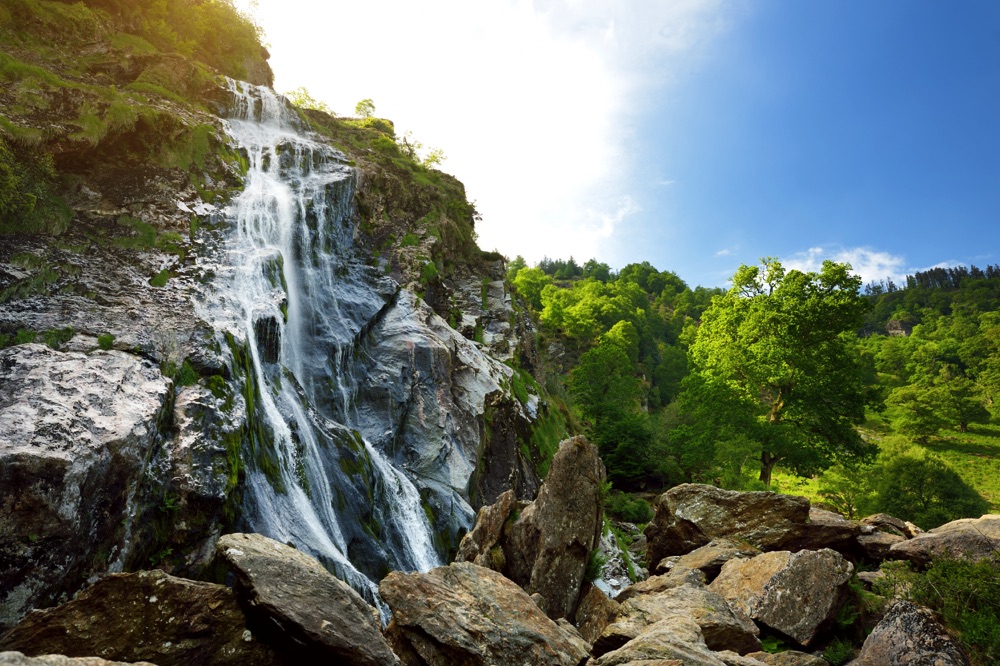
15. Shop Till You Drop at Avoca Village
Charming Avoca village was the setting for a popular television program in the late 1990s called ‘Ballykissangel’. Fans of the program continue to visit Avoca for this reason today.
The small village offers easy, accessible walks along the Avoca River which runs through the picturesque Avoca valley.
The principal attraction in Avoca is a visit to the Avoca Handweavers and Mill.
The Avoca Mill is the oldest working woolen mill in Ireland (established in 1723) and the family-owned company is one of Ireland’s oldest surviving businesses.
Today, Avoca craftsmen and women produce high-quality tweed and wool fabric plus clothing and homewares. These Avoca products boast a global fan base, evidenced by the coach loads of eager shoppers who visit the mill all year round.
There are free tours of the mill to discover how your favourite Avoca products are made with an adjoining shop which you will not be able to resist.
In recent years, Avoca has also made a name for itself as a luxury food producer with several outlets around County Wicklow (including a shop at Powerscourt Gardens and an unmissable restaurant on the outskirts of Bray).
There is a fantastic cafe at the Avoca Mill and, though Avoca cakes may not be the cheapest you will find in Ireland, they will definitely be some of the most delicious!
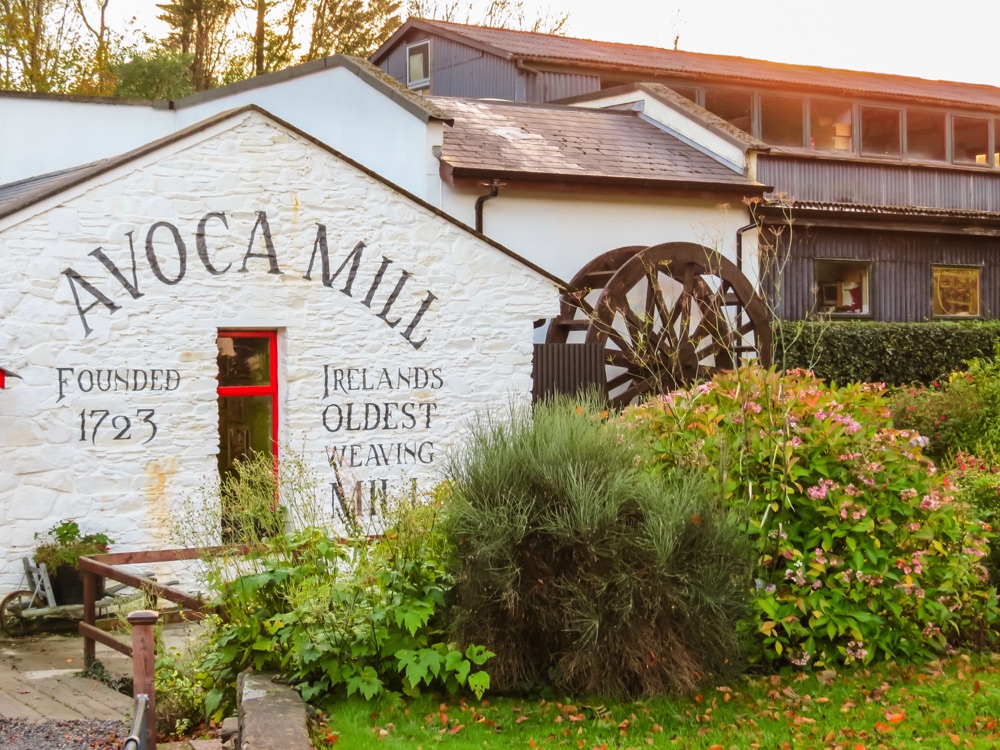
In addition, Avoca food products – such as their delicious cookies, or Irish Breakfast marmalade – make ideal souvenir gifts for visiting tourists to bring home.
The only problem is that you will not want to part with them when you get home.
Things To Do in Wicklow: FAQs
Here are some answers to commonly asked questions about visiting Wicklow.
Is Wicklow town worth visiting?
Absolutely! Don’t miss the pretty harbour town. Learn about Wicklow Town Gaol, explore the ruins, and grab a drink at the Brass Fox or Phil Healys Pub.
Do you have to pay to go to Glendalough?
There’s a €5 entrance fee for adults and children and students pay €3.00.
What is the main town in Wicklow?
Wicklow town itself is the main town in the county of the same name. Bray town is another notable destination in county Wicklow.
Now You Know What To Do in Wicklow
With something for everyone and close proximity to Dublin, there’s no reason to not check out this underrated county! There are so many things to do in Wicklow, the only problem is, you’ll find it challenging to fit it all in!
Images in this article are courtesy of Shutterstock.com, a website for sourcing royalty-free videos and images.
Like This Article? Pin it!
